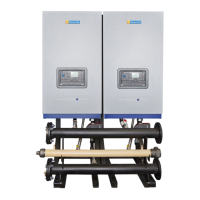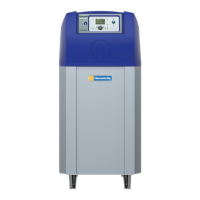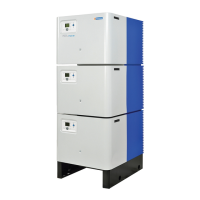
Do you have a question about the Hamworthy MILBORNE 501 Series and is the answer not in the manual?
Boiler installation rules, gas type, and safety regulations.
Features, models (381/501), and module configurations.
Available accessories like frame sets, circuit kits, and sensors.
Details on how the boiler is packaged and safe handling procedures.
Information on warranty coverage and manufacturer's liability terms.
Required clearances and physical dimensions for installation.
Information on the Hamworthy Heating Ltd frame set and pipework kit.
Guidelines for choosing a suitable location for the boiler.
Standards and specifications for gas pipework and connections.
Flue system requirements and terminal placement rules.
Requirements for connecting the boiler to the heating system's water supply.
Guidelines for draining condensate from the boiler and flue system.
Electrical connection standards, safety, and supply details.
Instructions for assembling the boiler and its flue system.
Details on water connections, pump selection, and system configuration.
Verifying gas installation soundness, purging, and meter checks.
Ensuring adequate air supply to the plantroom for combustion and ventilation.
Verifying installation of pipework, valves, and pump functionality.
Confirming correct flue system design, installation, and clarity.
Ensuring correct and isolatable electrical connections and operational external controls.
Procedure to check for gas leaks in the boiler system before operation.
Essential checks before lighting the boiler, including controls and gas configuration.
Measuring static and dynamic gas pressure to ensure adequate burner output.
Steps for commissioning the boiler, including initial lighting and combustion checks.
Step-by-step guide for lighting the boiler and verifying flame signal.
Description of the Master/Slave control system and its functions.
Recommendations for system design, primary circuits, and pump control.
Details on controlling high and low temperature heating circuits and DHW.
Connecting and controlling the boiler via a BMS using analog signals.
Procedure to activate emergency mode in case of Master control malfunction.
Connecting modules and assigning addresses for multi-boiler systems.
Guidelines for correctly positioning and mounting the room thermostat.
How users can adjust parameters like temperature set-points.
Adjusting temperature set-points for different heating circuits.
Accessing and interpreting data from the boiler's monitor mode.
Procedure for entering password and modifying parameters.
Steps to access the display for combustion testing.
Essential parameters to set for all installations, including gas type and frost protection.
Configuring parameters related to domestic hot water operation and priority.
Configuring parameters for constant temperature operation of high temp heating.
Configuring parameters for constant temperature operation of low temp heating.
Configuring parameters for compensated temperature operation of high temp heating.
Configuring parameters for compensated temperature operation of low temp heating.
Explanation of safety mechanisms like limit thermostats and flame sensing.
Steps to diagnose and resolve general and specific boiler faults.
List of probable causes for the boiler entering a lockout state.
Guidelines for annual servicing and additional checks.
Procedure for cleaning the burner and its components.
Steps for cleaning the boiler's heat exchanger.
Routine maintenance for cleaning the condensate drain device.
Maintenance for the ignition electrode to ensure proper function.
Information on how to identify and order correct spare parts using serial numbers.
Technical data for natural gas operation, including input and output ratings.
Technical data for LPG propane operation, including orifice sizes.
Step-by-step guide for converting the boiler from natural gas to LPG.
Details on electrical supply, wiring regulations, and connection methods.
Wiring diagrams for pumps, BMS, and thermostats.
Guidelines for flue system design, materials, and installation.
Data on waste gas volumes and temperatures for flue system design.
Requirements for managing condensate from the flue system.
Guidelines for air supply via natural or mechanical ventilation for boiler rooms.
Recommendations for water circulation, pump selection, and system configuration.
Information on safety valve requirements and pressure/temperature gauges.
Details on flow controls, shut-off valves, and frost protection measures.












